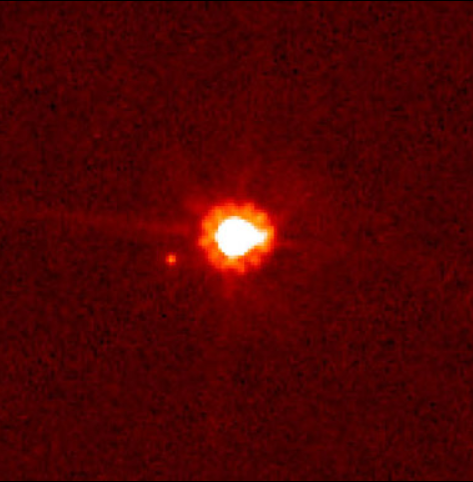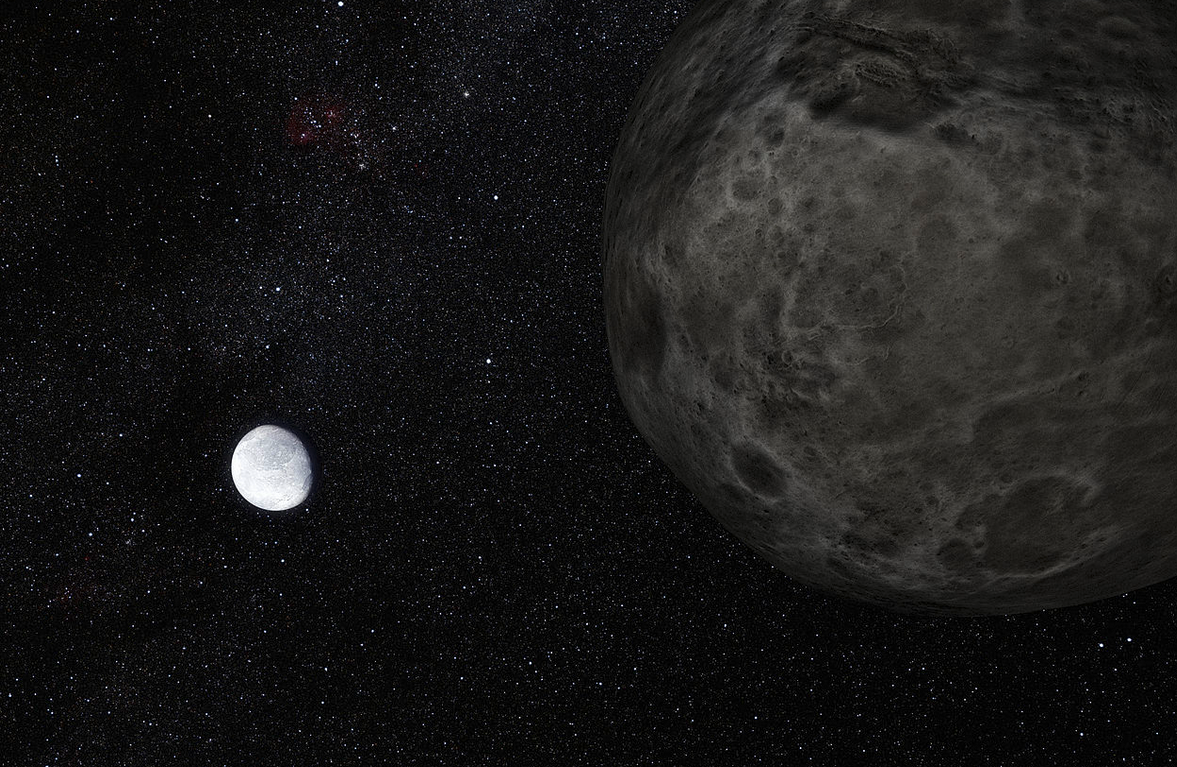What Is Eris?
Eris may be a new term to some people as it is relatively a new discovery when it comes to planetary bodies in our solar system. It is one of the largest known dwarf planets being roughly the same size as Pluto.

Initially it was thought that Eris might be larger than Pluto so briefly it was considered a possible new planet in our solar system. In 2006 however the International Astronomical Union set out some basic guidelines to define what a planet is. Both Eris and Pluto would fail to meet all the guidelines causing a downgrade in classification for Pluto and an official designation for Eris. They were not planets, they were dwarf planets.
Its minor planet designation is 136199 Eris and it is considered a trans-Neptunian object because although it orbits our Sun it does so from further away than the last planet in the solar system, Neptune.
Eris’s Structure
Due to its vast distance from Earth little is known of the actual structure of Eris. What is known is that it is a member of a group of objects orbiting in a disc-like zone beyond Neptune. This zone is called the Kuiper Belt and is populated with thousands of miniature icy worlds. The objects in the belt formed early in the history of our solar system roughly 4.5 billion years ago. The countless objects in this region are known as Kuiper Belt objects, trans-Neptunian objects, or plutoids.
Surface
Although scientists can not be sure at present they believe the surface of Eris may be rocky much like that of fellow dwarf planet Pluto. Estimates suggest that surface temperatures may vary from about -359 degree Fahrenheit to -405 degrees Fahrenheit. So it’s pretty cold out there in our distant solar system far away from the Sun.
Atmosphere
The atmosphere of Eris varies depending on where it is in its orbit around the Sun. When at its closest it likely has a gaseous atmosphere but as it moves further away this atmosphere collapses and freezes. This would lead to it falling as snow onto the surface of the planet.
Does Eris Have Moons?
Eris has just one moon, Dysnomia, named for the daughter of Eris’s mythical namesake. Dysnomia was the demon goddess of lawlessness. It has an almost circular orbit around Eris taking 16 days to make one circuit of the dwarf planet.

The moons of a planet are very helpful in determining the size of their parent planet and Dysnomia has proven especially helpful. If not for Dysnomia we might still think Eris is larger than Pluto and potentially may still be considering Eris as a possible ninth planet in our solar system.
History of the Observation of Eris
Eris is so far away from earth that unlike 7 of our solar system’s planets we can not see it with the naked eye. Even with the advent of telescopes it would take hundreds of years to first image and then discover the existence of Eris.
It was a team made up of Mike Brown, Chad Trujillo, and David Rabinowitz who were reviewing images captured on October 21st 2003 using the 1.2 m Samuel Oschin Schmidt telescope at Palomar Observatory, California. It was over a year after the images were taken that this group on January 5th 2005 discovered the presence of Eris as well as other planetary objects such as Makemake (same day) and Haumea (found 2 days earlier).
The reason Eris was not immediately identified is because it was moving too slowly. The software used would not detect movement slower than 1.5 arcseconds per hour so although Eris was moving across the sky this was not flagged.
The team did not immediately report their findings as they wanted to observe more about the potential orbit before going public. On July 27th 2005 however a Spanish team announced the discovery of Haumea which led the group to announce their other two discoveries at the risk of being scooped yet again by the team from Spain.
Later in the year in October the results of ongoing observations confirmed a moon for Eris and this was announced. The orbit of this moon around Eris made it possible to estimate the dwarf planet’s mass.
Namesake
Eris was proposed as a name for this new dwarf planet in honor of the Greek goddess of strife and discord. It was officially named on September 13th 2006 and its moon was given the name of Eris’s daughter Dysnomia.

Space Exploration
In May of 2020 the New Horizons spacecraft which did a flyby of Pluto was able to make some observations of Eris. Despite being further away from Eris than it was from its own start point on Earth it was able to observe things that we could not hope to do so from our own planet.
There have been multiple proposed projects to try and make a flyby of Eris and further exploration of the Kuiper belt although none are planned in the near future. It is estimated it would take over 16 years to make the journey to Eris for a flyby.
How Far Is Eris from Earth?
Eris is a vast distance from Earth; it would take almost 25 years to reach the planet with current spacecraft technology. When the two are at their closest which will be Monday, November 8th 2100 they will be 12,380,501,398 kilometers apart.
Final Thoughts
The Dwarf planet Eris is way out in our solar system even further than Pluto which itself sits beyond Neptune. It is over 12 billion kilometers away from our planet when at its closest and much further away most of the time. It takes over 12 hours for light from Eris to reach Earth.
